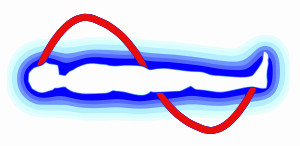Lecture notes on Engineering Principles of Radiation Imaging
About the Lectures
The effect of radiation transport and quantum noise on image quality is explored in the context of both conventional and newly developed systems. Radiation sources for imaging, mathematical descriptions of image quality, and the performance of humans as visual observers are covered. Specific systems considered include phosphor screen and direct digital radiography systems, Anger camera systems, x-ray computed tomography (CT) systems, and Positron Emission Tomography (PET) systems. Particular emphasis is given to the statistical processes important in radiographic and nuclear medicine imaging systems.

